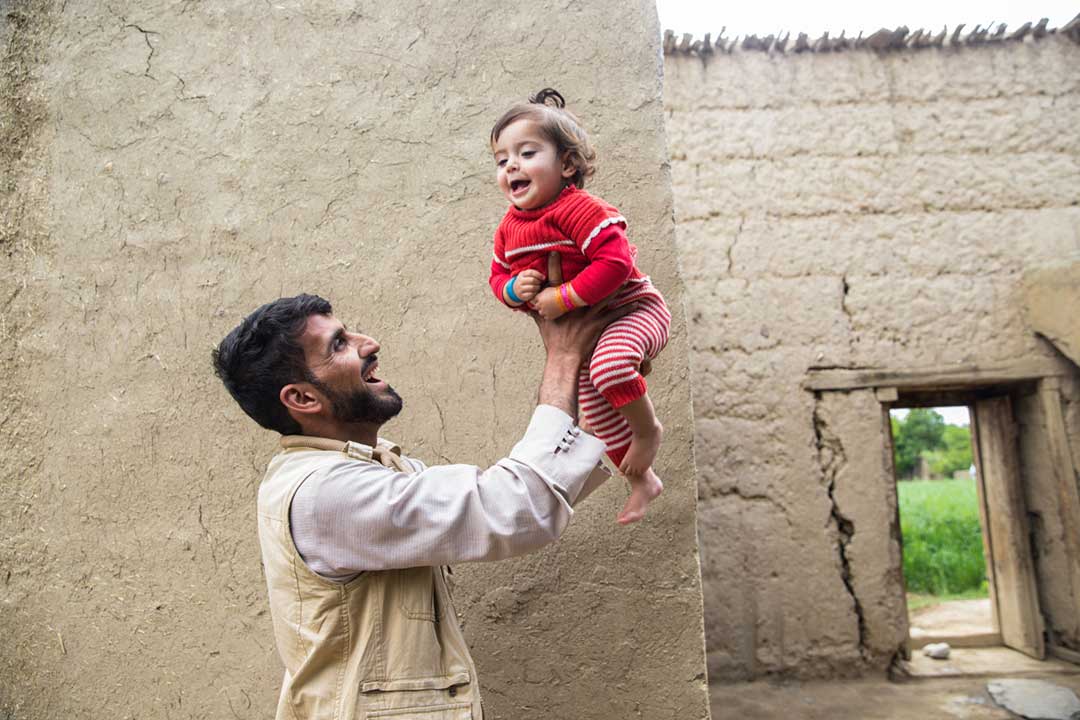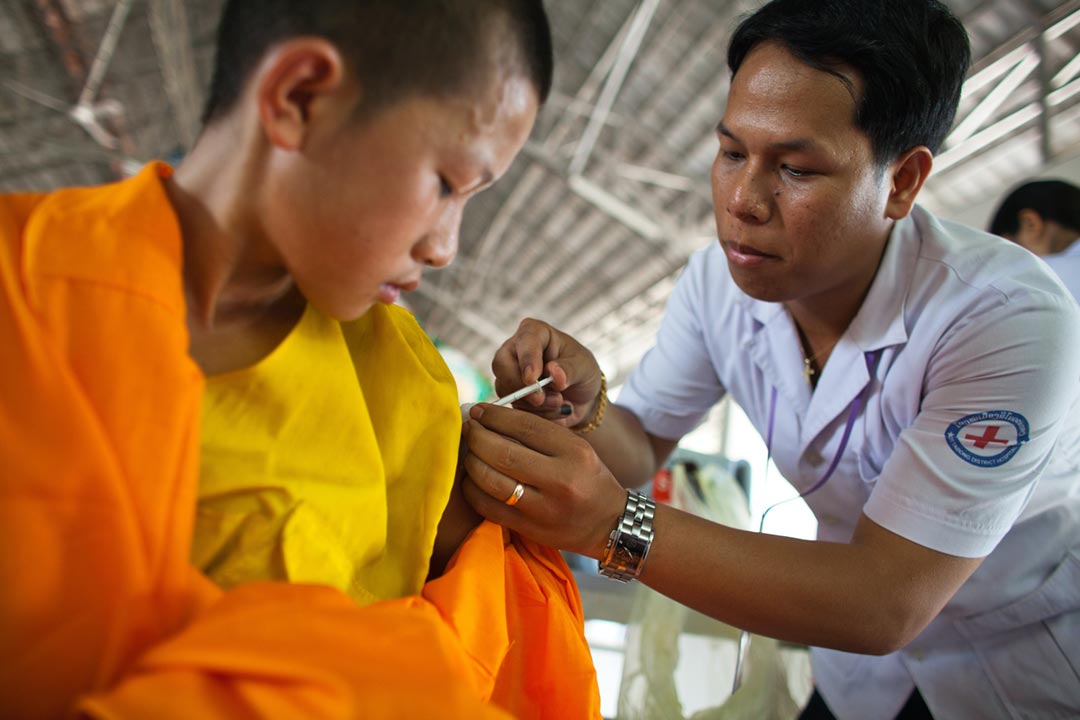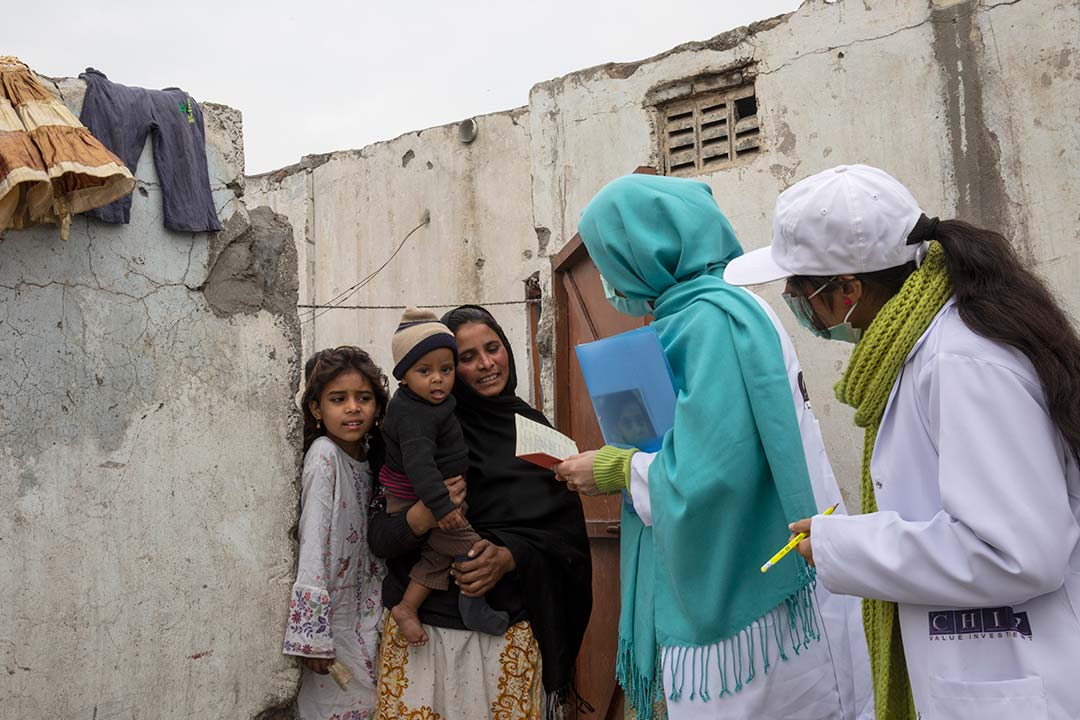Three ways immunisation is helping drive the agenda at WHO’s Annual Meeting
WHO’s Executive Board has gathered countries from across the world in Geneva this week to discuss the year’s priorities for global health. Here are three ways immunisation can help drive Health for All.
- 24 January 2024
- 5 min read
- by Anamaria Bejar , Thiago Luchesi

This week, Member States are in Geneva to drive global health priorities for the year and set the agenda for the World Health Assembly in May. Country delegations are tackling a multitude of pertinent topics, ranging from Universal Health Coverage, maternal health and child mortality, antimicrobial resistance, climate and health, and health emergencies.
Here are three ways immunisation can be a game changer to improve health outcomes:
Reducing maternal and child mortality
Given the bleak progress made towards the SDG targets to reduce maternal and child mortality (targets 3.1 and 3.2), the prioritisation of this topic in this year's Executive Board is crucial. With only six years remaining until 2030, 54 countries are off track to meet the under-five mortality target and 46 countries are projected to have doubled the target of reducing maternal deaths to 70 deaths per 100,000 live births.
Even while the number of zero-dose children fell to an estimated 14.3 million in 2022, the world is yet to reach 2019 pre-pandemic levels.
These worrying trends are exacerbated by immunisation rates' slow bounce-back from the negative impacts of the COVID-19 pandemic, with the global coverage rate of diphtheria, tetanus and pertussis-containing vaccine (DTP3) increasing by 3% to 84% in 2022. And even while the number of zero-dose children, or children who have not received a single dose of DTP3, fell to an estimated 14.3 million in 2022, 3.8 million less than in 2021, the world is yet to reach 2019 pre-pandemic levels (86% DTP3 coverage; 12.9 million zero-dose children). Efforts need to be urgently accelerated if we are to achieve the Immunization Agenda 2030 target of reducing the number of zero-dose children by 50%, by 2030.
Reaching zero-dose children with a full course of vaccines has the potential to substantially reduce child mortality, as nearly one third of all-cause under-five child deaths in lower- and middle-income countries (LMICs) occur in households with a zero-dose child. This is because almost two thirds of zero-dose children live in households surviving below the international poverty line, are not reached by any health service and suffer from multiple deprivations. Further, the families of zero-dose children face gender-related barriers to immunisation, and it is twice as likely that women in those settings miss out on antenatal care or skilled birth attendance.
The true value and potential of vaccines in preventing AMR has long been under-recognised. The vast majority of national AMR plans do not include immunisation as a tool for preventing and reducing AMR.
In addition to reaching zero-dose children, countries must consider introducing and scaling up coverage of critical vaccines, as appropriate to their context, to prevent major causes of child mortality such as pneumonia, diarrhoea and measles. And now, with two vaccines against malaria – the RTS,S vaccine prequalified by WHO in July 2022, and the R21 malaria vaccine prequalified by WHO in December 2023 – we have an opportunity to curtail the malaria burden in endemic countries, as part of comprehensive malaria control plans.
Combatting antimicrobial resistance
With the WHO global action plan on antimicrobial resistance (AMR) ending in 2025 and the UNGA High-level Meeting on Antimicrobial Resistance set to take place this September, AMR is back on the global health priority list. Antimicrobial resistance is an urgent global health and socioeconomic crisis that threatens the core of modern medicine. Revitalised political action that utilises all effective measures to tackle AMR is paramount.
Have you read?
Vaccines are considered one of the most cost-effective ways of preventing morbidity and mortality, and are an important tool in preventing AMR, because they protect people from infection and reduce the spread of infection, thereby reducing the opportunity for antimicrobial resistance to develop and spread. Vaccines also offer protection from the use of antibiotics to treat secondary bacterial infections and from their inappropriate use for viral illnesses.
Gavi supports the distribution of vaccines against 19 infectious diseases, some of which are particularly powerful in preventing AMR, such as pneumococcal, typhoid and Haemophilus influenzae type b. Many other Gavi vaccines, including those for measles and COVID-19, also contribute to the battle against AMR by reducing unnecessary antibiotic use and predisposition to secondary bacterial infections.
The true value and potential of vaccines in preventing AMR has long been under-recognised. The vast majority of national AMR plans do not include immunisation as a tool for preventing and reducing AMR. Looking ahead, the need to put more focus on vaccination as a tool to combat AMR is clear.
Climate and health
Following the first ever COP28 Health Day, there's strong momentum for transformative action on climate and health. Climate change is a global health emergency that requires urgent collaboration, innovation and strong political will from across all stakeholders.
The cost of inaction on climate change is high. More than half of known human infectious diseases are aggravated by climate change, including those that are vaccine preventable and supported by Gavi, such as malaria and dengue.
The impacts of climate change to the underlying social and environmental determinants of health are particularly concerning because they disproportionately affect the most vulnerable and marginalised communities.
The impacts of climate change to the underlying social and environmental determinants of health are particularly concerning because they disproportionately affect the most vulnerable and marginalised communities.
While 60% of countries have referred to one or more climate-sensitive health risks or outcomes in their “nationally determined contributions”, few have translated their commitments into preventive health measures in their national adaptation plans. Preventive measures, such as routine immunisation, surveillance, and vulnerability assessments, are critical because they help strengthen health systems and population resilience and build preparedness against climate and other health emergencies.
Finally, as more than 70% of global greenhouse gas emissions attributed to the health sector come from supply chains, the role of the private sector in supporting the health sector to tackle the climate emergency cannot be understated. Collective action will be needed to decarbonise health supply chains and procurement as part of the broader effort to build climate resilient, low-carbon, and sustainable health systems.
Read Gavi's statements at the WHO Executive Board on:
More from Anamaria Bejar
Recommended for you








